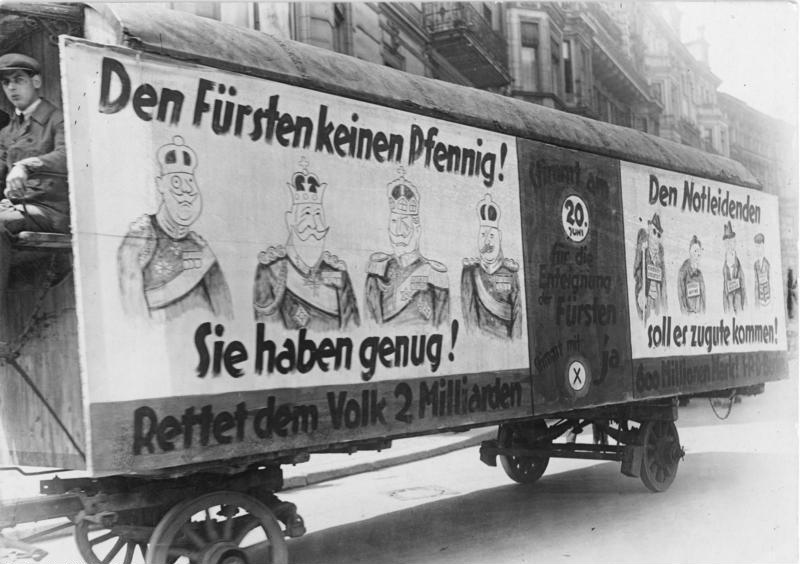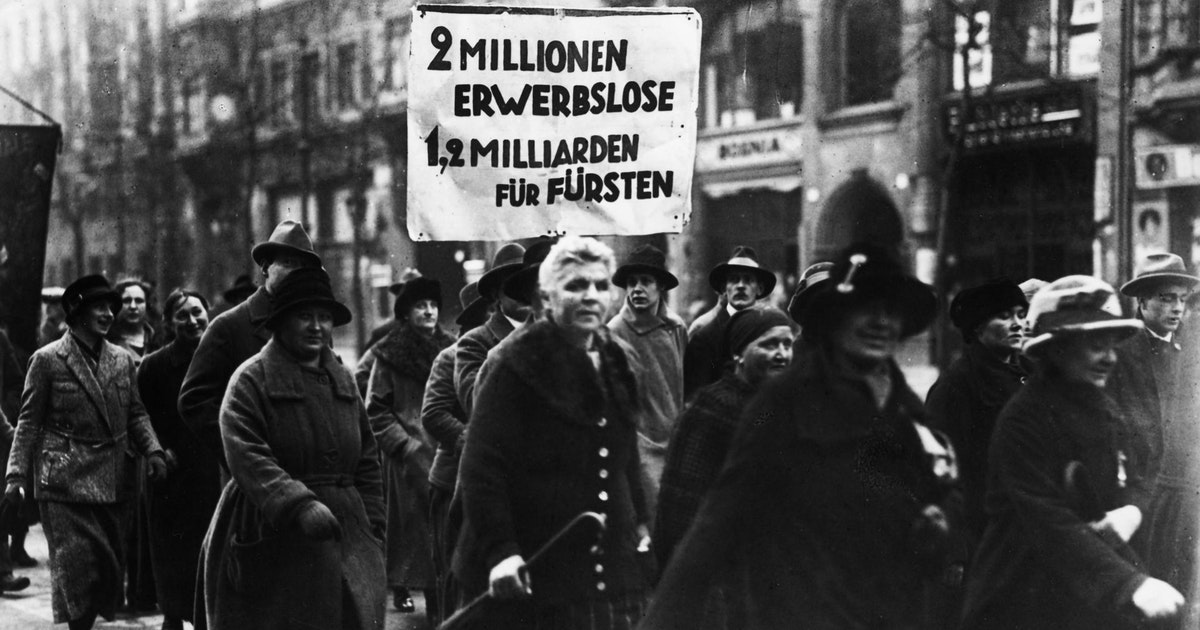The revolution of the Workers' and Soldiers' Councils caused the German Emperor Wilhelm II to flee into exile in the Netherlands in 1918, and the Weimar Republic sent him a hefty settlement and 59 railroad cars full of luxury goods after him.
The other assets and real estate of the remaining Hohenzollerns and other princely houses were to be confiscated. After an initial scare and the social-democratic betrayal of the revolution, the aristocrats regained their old self-confidence and demanded compensation payments or even the return of assets. Their demands had an easy time in front a judicial system that was still riddled with monarchists. The ruling bourgeoisie also had an interest in protecting princely property in order to preserve the integrity of private property as a whole. The latter was also denounced by KPD deputy Daniel Greiner: "You know that once the private property of the princes is touched, it is then not far to the next step of going to private property at all."
Against this background, profoundly reactionary court decisions occurred in 1925. For example, on June 18, the Reichsgericht overturned a 1919 USPD law, ordering the return of lands to the Dukes of Saxe-Coburg and Gotha worth 37.2 million gold marks. Thereupon, the KPD initiated a referendum to legally fix the expropriation of the nobility without compensation. The content of the referendum managed to mobilize the masses, even within layers of the peasantry and petty bourgeoisie, where KPD campaigns had previously had little resonance. It also drove a wedge between the SPD's party base and its leadership, which, fearing for its statist external image, only participated in the campaign out of necessity. Therein already lies the secret success of this referendum, a broad mobilization for expropriation demands under the leadership of the KPD, and the further exposure of revisionism in the labor movement.
The referendum itself failed because of the political system of class society. Then, as now, parliamentarism was the dictatorship of the bourgeoisie. The referendum was successful, but could be rejected by parliament, which of course did. This led to a referendum, the hurdles of which had been exorbitantly raised in advance by the avowed monarchist and Reich President Paul von Hindenburg. Previously, a simple majority of the votes cast had been sufficient. Now, however, 50 percent of those eligible to vote, i.e. about 20 million voters, had to approve the referendum in order for it to be successful. The rulers ran expensive campaigns against the referendum. The party of the monopolies DNVP, for example, used funds in the agitation against the referendum that were considerably higher than those for the election campaigns of 1924. Farm workers were pressured with unemployment to vote against the referendum. Nevertheless, the referendum supporters were able to attract a considerable number of votes. 14,455,181 voted for Yes and only 585,714 for No, so the 20 million could not be reached. The referendum had thus failed and the governments continued to negotiate with the nobility. The House of Hohenzollern and its collateral lines subsequently received 383,000 acres of land back, while only 250,000 acres from the confiscated total assets remained with the state of Prussia.

"Not a penny to the prince"

"2 million unemployed - 1,2 billions for the princes"
